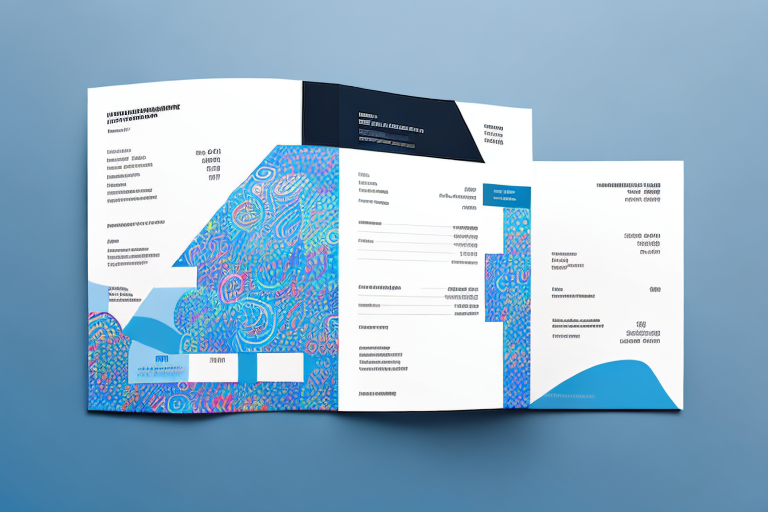In today's digital age, the need for physical paperwork has significantly diminished, replaced by digital documents like invoices. Invoices are an integral part of any business transaction, providing a detailed record of goods or services provided and their corresponding costs. If you're a freelancer, entrepreneur, or small business owner, knowing how to make fake invoices is crucial. But what does "fake" mean in this context? It merely refers to a digitally created document, not an illegal or fraudulent one.
This comprehensive guide will walk you through the process of creating a professional invoice, discussing everything from the basics of invoice creation to the more complex aspects like VAT invoices and payment terms. By the end of this guide, you'll be well-equipped to create appealing and professional invoices with ease, using tools like the Genio Invoice Maker.
What is an Invoice?
Before we delve into how to create an invoice, let's first understand what an invoice is. An invoice is a document issued by a seller to a buyer, detailing the goods or services provided, their quantities, and their prices. It serves as a demand for payment and a record of the transaction.
A typical invoice includes the following components:
- Seller's contact information
- Buyer's contact information
- A unique invoice number
- Date of issue
- Description of goods or services provided
- Total amount due
- Payment terms and methods
Crafting an Invoice: Step-by-Step Guide
Now that we've covered the basics, let's move on to the step-by-step process of creating an invoice.
1. Establish Your Brand Identity on the Invoice
The first step in creating an invoice is to establish your brand identity. This step involves adding your company's logo, name, and contact information to the invoice. Doing so not only imparts professionalism but also helps in brand recall.
You can easily add your company's logo and other details to your invoice using Genio Invoice Maker.
2. Include Your Contact Details
It's essential to include your contact details in the invoice. This information should encompass your name, phone number, email address, and business address. This not only makes it easier for your clients to contact you but also fulfills legal requirements.
3. Specify Your Company Name and Information
Your company's name should be prominently displayed on the invoice, along with any business registration number. This helps in clearly identifying who the invoice is from, especially when the client has numerous invoices to review.
4. Detail the Goods or Services Provided
An essential part of the invoice is the detailed list of goods or services provided. Each item should be listed separately, with a clear description, quantity, and price. This clarity in itemization can help avoid any confusion or disputes later on.
5. Include Relevant Dates
Dates provide context and clarity to an invoice. Two dates are crucial to include:
- The date the goods or services were provided
- The invoice issue date
These dates serve as a point of reference and ensure that your clients are aware of when the work was completed or the goods were delivered.
6. Calculate and State the Total Amount Due
Next, you'll need to calculate and state the total amount due. This involves adding up the cost of each item and including any taxes. Make sure to double-check your calculations to avoid any errors.
7. Outline Acceptable Payment Terms
Your invoice should clearly state the payment terms. These include the accepted methods of payment (cash, credit card, check, online payments, etc.) and the timeframe within which payment is expected. Be sure to discuss these terms with your client beforehand and mutually agree upon them.
8. Understand VAT Invoices
If you're doing business in the European Union or other countries that use Value-Added Tax (VAT), you'll need to issue VAT invoices. These are slightly more complex than standard invoices and require additional information, including your VAT registration number, VAT rate, and total VAT charged per item.
9. Send Your Invoice
Once your invoice is complete, you can send it to your clients. While emailing it as a PDF attachment is common, using an invoice generator like Genio Invoice Maker can provide added benefits like real-time tracking, digital signatures, and easy integration.
Final Thoughts
Creating professional invoices doesn't have to be a daunting task. With the right tools, like Genio Invoice Maker, and an understanding of the fundamental components of an invoice, you can easily create invoices that are not only functional but also enhance your brand image.
Disclaimer
This guide is intended to provide general information about creating invoices and is not a substitute for legal advice. If you have any legal questions regarding invoicing, please consult a legal professional.
Genio Invoice Maker is more than just an invoice creator. Recognized by freelancers and entrepreneurs worldwide, our platform offers 900 templates for invoices, estimates, and receipts and unbeatable features like real-time tracking, digital signatures, easy integration, secure cloud storage, and multi-currency support. Try it out for free today!
